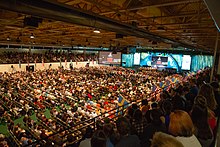Camilla Christine Hall was a member of the Symbionese Liberation Army (SLA), a small, far-left militant group that committed violent acts between 1973 and 1975. They assassinated Marcus Foster, Superintendent of the Oakland Public Schools and the first black superintendent of any major school system, kidnapped white heiress Patty Hearst, and committed armed robbery of banks.

The Nobel Prizes are five separate prizes awarded to those who, during the preceding year, have conferred the greatest benefit to humankind, as established by the 1895 will of Swedish chemist, engineer, and industrialist Alfred Nobel, in the year before he died. Prizes were first awarded in 1901 by the Nobel Foundation. Nobel's will indicated that the awards should be granted in the fields of Physics, Chemistry, Physiology or Medicine, Literature, and Peace. A sixth prize for Economic Sciences, endowed by Sweden's central bank, Sveriges Riksbank, and first presented in 1969, is also frequently included, as it is also administered by the Nobel Foundation. The Nobel Prizes are widely regarded as the most prestigious awards available in their respective fields.

St. Peter is a city and the county seat of Nicollet County, Minnesota United States. It is 10 miles north of the Mankato – North Mankato metropolitan area. The population was 12,066 at the 2020 census. It is home to Gustavus Adolphus College.

Karl Gunnar Myrdal was a Swedish economist and sociologist.

Gustavus Adolphus College is a private liberal arts college in St. Peter, Minnesota. It was founded in 1862 by Swedish Americans led by Eric Norelius and is affiliated with the Evangelical Lutheran Church in America. Gustavus gets its name from Gustavus Adolphus, the King of Sweden from 1611 to 1632. Its residential campus includes a 125-acre arboretum.
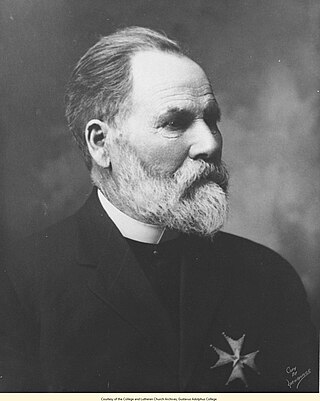
Eric Norelius was a Swedish-American Lutheran minister, church leader, and author.
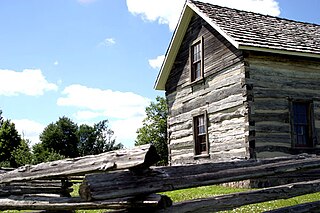
The Arboretum at Gustavus Adolphus College, also known as TheArboretum at Gustavus or colloquially as The Arb, is on the campus of Gustavus Adolphus College in Saint Peter, Minnesota, United States. It contains a number of botanical gardens and a 125 acre arboretum with its first trees planted as small seedlings in 1973 on agricultural land. The arboretum was formerly named for Carl Linnaeus, a Swedish botanist, from 1988 to 2021.
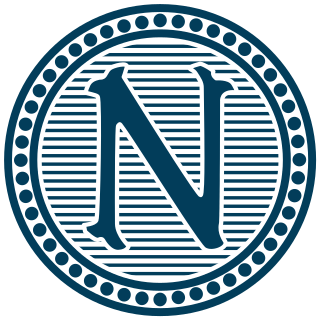
The Nobel Foundation is a private institution founded on 29 June 1900 to manage the finances and administration of the Nobel Prizes. The foundation is based on the last will of Alfred Nobel, the inventor of dynamite.
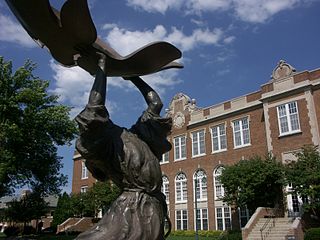
Paul T. Granlund was an American sculptor. His creative career spanned more than 50 years and more than 650 different works. Most of his work is figurative and made from bronze. His patrons included colleges, hospitals, Lutheran churches, and other institutions.

Clarence R. Magney was an American attorney, lawyer, and jurist who served as the mayor of Duluth from 1917 to 1920 and associate justice of the Minnesota Supreme Court from 1943 to 1953.
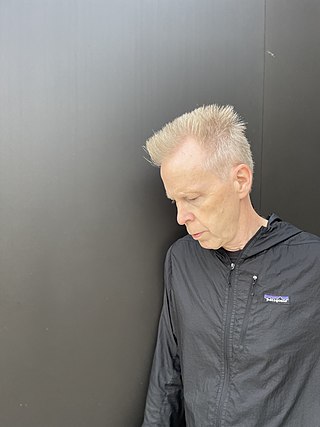
Steve Heitzeg is an American composer whose works include compositions for orchestra, chorus, chamber ensemble, ballet, and film.
Sydney Eckman Ahlstrom was an American historian. He was a Yale University professor and a specialist in the religious history of the United States.

Melva Lind graduated from the University of Minnesota with a Bachelor of Arts degree in 1923 and a Master of Arts degree in 1943. She then received the French equivalent to a Master of Arts degree from the Université de Lyon in Lyon, France in 1926. She went on to attend the Université de Paris en Sorbonne in Paris, where she earned her Doctorate in 1929. After which she attended MacPhail School of Music in Minneapolis, Minnesota where she earned a Master of Music in 1937. Over the years she continued her education with two diplomas from the Université de Clermont-Ferrand in France in 1923 and 1924 and a scholarship from the Conservatoire de Musique in Lyon, France in 1924–1925. She also studied around the world at the Universidad de Mexico in Mexico City in 1942, a study seminar in Germany during the summer of 1964, Greece in March 1973, Israel in July 1973, and the Institut de Langue et de Littérature Françaises at the Université de Rennes in France during the summers of 1970–1972.

Tau Mu Tau (ΤΜΤ) is a local sorority at Gustavus Adolphus College.
Donald Roberts was an American college men's ice hockey coach. From 1964 to 1997, he was the head hockey coach at Gustavus Adolphus College in St. Peter, Minnesota. At the time of his retirement in 1996, he was the winningest hockey coach in NCAA Division III history. He received the John MacInnes Award from the American Hockey Coaches Association in 1993 and the Hobey Baker Legends of College Hockey Award in 2009. As of 2010, he ranks 15th all-time among college men's ice hockey coaches with 532 wins.
Gloria June Tew was an American abstract sculptor known for her work in marble, bronze and steel. Tew's sculptures are found in institutions, museums, churches and private collections including, King Carl XVI Gustaf and Queen Silvia of Sweden. She resided in Minneapolis.

Kansas Lake Evangelical Lutheran Church was a small, rural church located near Butterfield, Minnesota, United States. Formed in 1871 by Swedish-Americans settling in the area, the church served the local population for 138 years before closing in 2009.
Jack "Jocko" Nelson was an American football coach. He coached football at Utah State University (1955–1957), the University of Colorado (1958), the University of Michigan (1959–1965), Gustavus Adolphus College (1966–1970), and for the Minnesota Vikings of the National Football League (1971–1978).

The Lutheran Minnesota Conference was one of the 13 conferences of the Augustana Evangelical Lutheran Synod. Formed by Swedish immigrants in the 1800s, it originally encompassed Minnesota, parts of North Dakota, South Dakota, Canada, and Wisconsin. Its size was substantially reduced years later when Alexandria, Fargo, and Red River Districts became the Red River Valley Conference in 1912, and the Alberta District and Canada Mission field became the Canada Conference in 1913. With the creation of the Lutheran Church in America (LCA) in 1962, it became known as the Minnesota Synod.
Stephen L. "Steve" Wilkinson was an American tennis player and tennis coach. As the head coach of Gustavus Adolphus College men's tennis team from 1971 till 2009, Wilkinson was the coach with most wins in the history of collegiate men’s tennis (929). He was also the No. 1 player in the United States in the 45-, 50-, 55-, and 60-and-over age groups, represented the US team in Dubler Cup, Perry Cup and Austria Cup and was a world team champion in 1989 (Uruguay) and word silver medalist 1992 (Germany). Wilkinson was inducted into United States Professional Tennis Association’s Hall of Fame, the USTA Missouri Valley Hall of Fame and the ITA Men’s Collegiate Tennis Hall of Fame.
